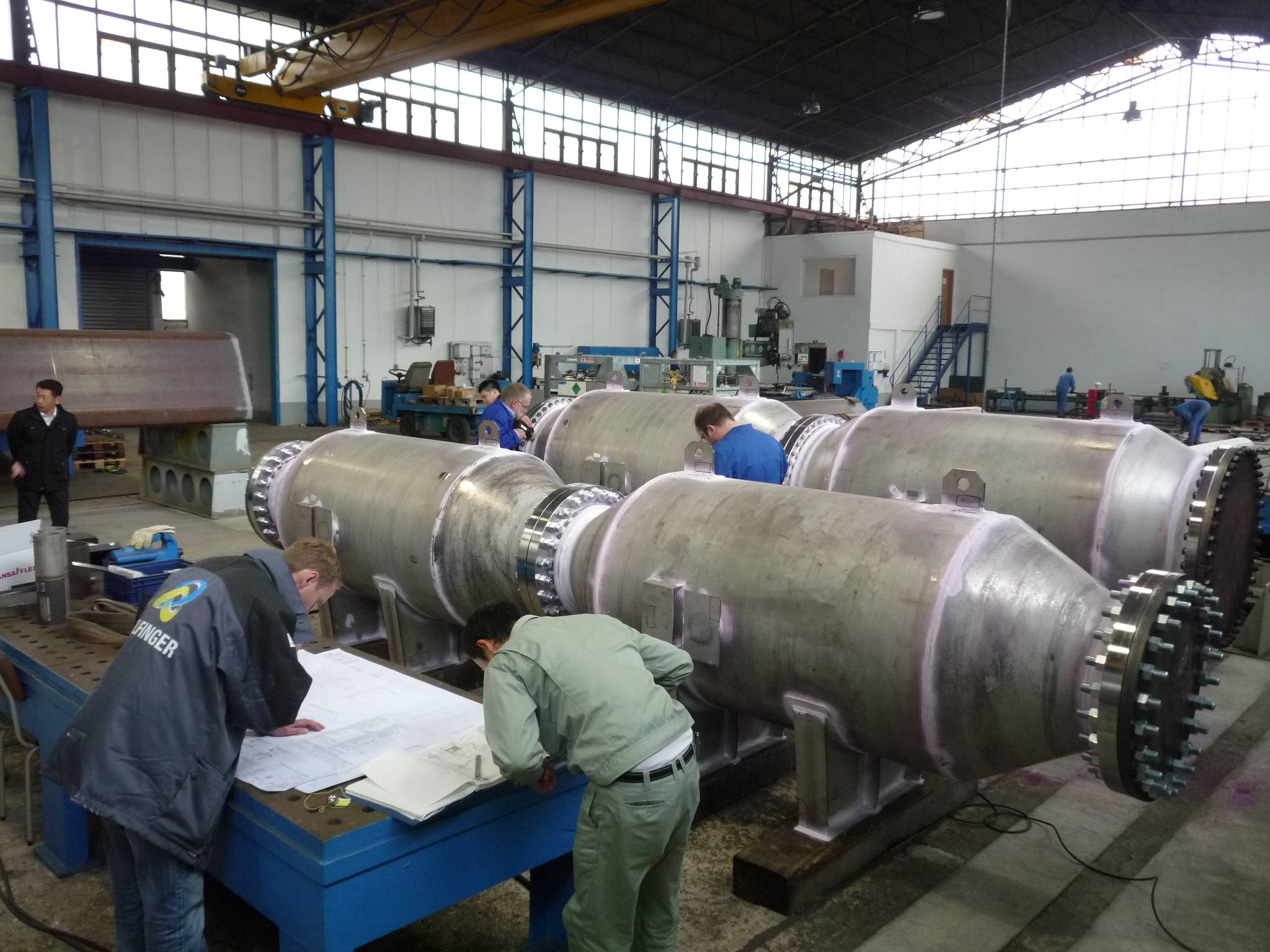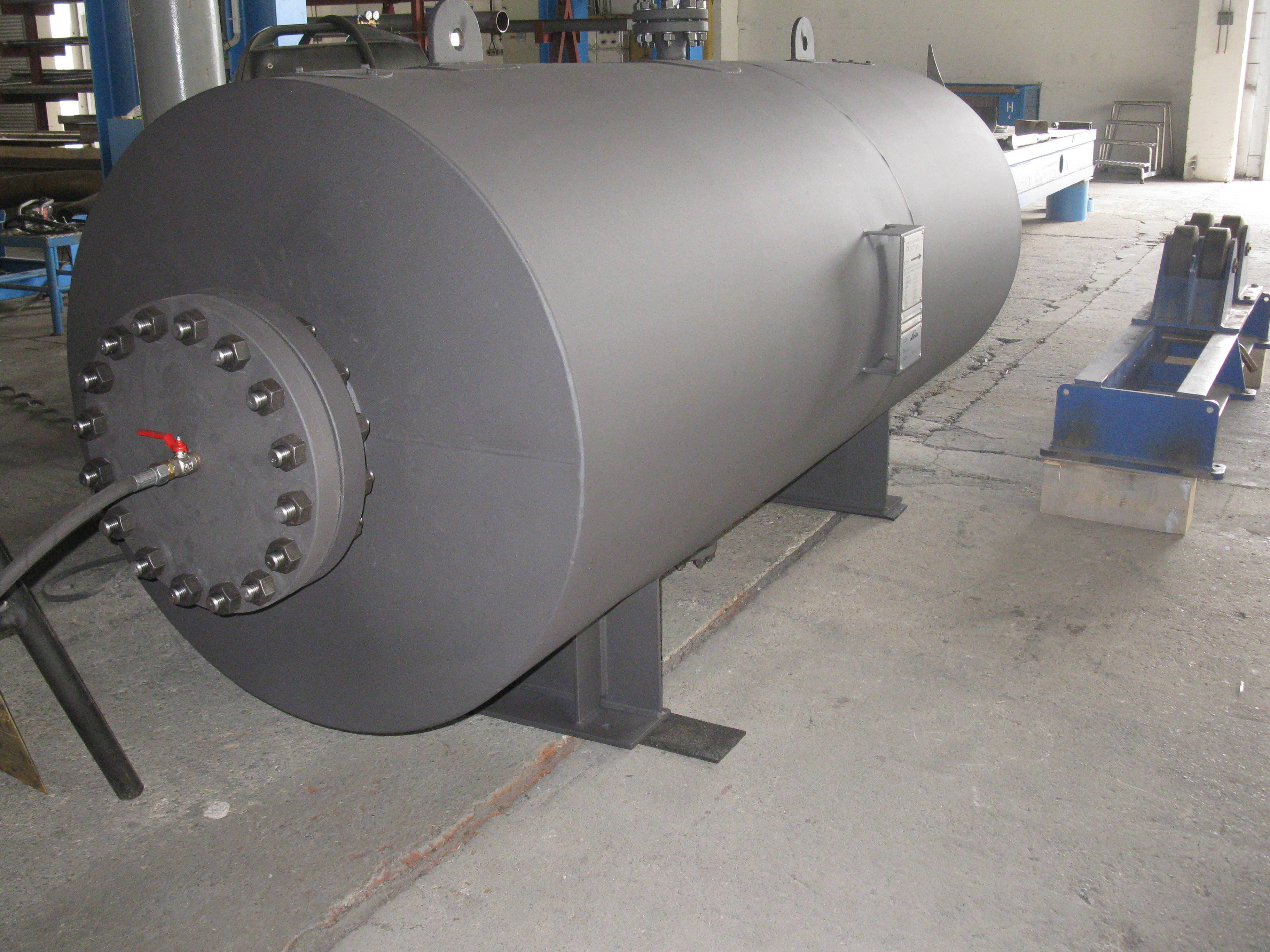a) Inline Silencer (pressure silencer)
This silencer works according to the principle of the splitter silencer described under 1). It is used in pressurized piping systems (compressors, etc.). The adjustment of the absorber is calculated according to the medium to be used, since pressure, temperature and density influence the wavelength of the sound waves.




Thus the length-specific flow resistance of the absorber must be adapted to the required damping (adaptation ratio).
Since the baffles (mostly concentric rings, because of the better stability) are often exposed to high loads, we use the following baffle design as standard
– concentrical splitter rings
– frames out of 2,0mm sheet metal galvanised or stainless steel
– Absorbing material out of mineral fibre (not flammable acc. DIN 4102 Kl. A) with sufficient density
– Abrasive protection with 1 layer glassilk and 1 layer SS narrow meshed wire mesh
– cover with perforated sheet metal 2,0 mm galvanized or SS


NOTE: Pressure vessel directive:
he vessels of the pressure silencers are in most cases subject to a pressure equipment directive:
1.Classification of vessel acc. to conformity diagrams (PED 97/23/EG)
2.Definition of testing procedures by means of the Modul categories
3.Calculation acc. to AD 2000
4.If applicable pre – approval of drawings through TÜV
5.test and PAC in acc. with Modul categories

Resonance silencer for positive displacement blowers.
b) Reactive Silencer (Resonator)
Resonance silencers or resonators are used where low-frequency noise within pipe or duct systems or blow-off systems is to be reduced. It is used in pressure systems (pressure silencers) or unpressurized lines (exhaust or blow-off lines).
Since the resonance chamber (reflection point) can only be designed for one main interference frequency, e.g. number of blades x speed, combined resonance / absorption dampers are usually used in practice. These have the advantage:
a)To reduce the main interference frequency considerably
b)Reduce remaining middle and high frequencies


